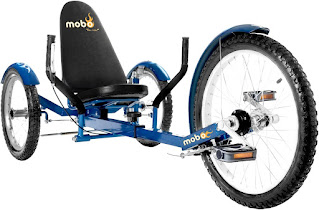Adaptive Bicycles for Seniors with Mobility Challenges: A Comprehensive Guide
Recumbent Bikes
Recumbent bikes are a popular option for seniors with mobility challenges because they offer a comfortable and stable riding experience. These bikes have a reclined seating position, which can be more comfortable for seniors who may have back or neck pain. They also have a low center of gravity, which provides more stability and balance.
Recumbent bikes come in a variety of styles, including trikes (three-wheeled bikes), tandem bikes (two-seated bikes), and hand-pedaled bikes. Some recumbent bikes also have electric-assist options, which can be helpful for seniors who may need assistance with pedaling. Check out the details of the one pictured here.
Handcycles
Handcycles are another popular adaptive bicycle option for seniors with mobility challenges. These bikes are powered by the rider's arms rather than their legs, making them an ideal choice for those with lower limb disabilities. Handcycles come in a variety of styles, including recumbent and upright positions, and can be customized to fit the rider's needs.
Handcycles are particularly well-suited for seniors who may have balance issues, as they have a low center of gravity and a stable three-wheeled design. They can also provide a great upper-body workout, making them a good option for seniors who want to improve their cardiovascular health and strength.
Choosing the Right Adaptive Bicycle
When selecting an adaptive bicycle, there are several factors to consider. First and foremost, it's important to find a bike that is comfortable and fits the rider's needs. This may require some trial and error, as different types of adaptive bikes may work better for different individuals.
It's also important to consider the terrain and the intended use of the bike. Recumbent bikes and handcycles may be better suited for paved paths and roads, while mountain bikes may be better for off-road trails. Electric-assist options can be helpful for those who may need assistance with pedaling or navigating hills.
Finally, it's important to consider the budget. Adaptive bicycles can be expensive, so it's important to set a budget and explore different options to find the right bike for the price.
Conclusion
Adaptive bicycles offer a great way for seniors with mobility challenges to stay active and enjoy the outdoors. Whether you choose a recumbent bike or a handcycle, there are many options available that can provide a comfortable and safe riding experience. By taking the time to explore different types of adaptive bicycles and finding the right fit for your needs, you can enjoy the many benefits of cycling and improve your physical and mental health.
Full disclosure, I want to be transparent about the fact that if you decide to click on any of the links provided and make a purchase, a portion of the proceeds will be directed towards a non-profit organization that I support called Nick's Treats. This non-profit helps to fund a dessert truck, which is fully operated by young individuals who are affected by autism and Down syndrome. Please note that this commission will not result in any additional cost to you.
Here is the next post of my blog: Biking the Scenic Great Allegheny Passage: A 150-Mile Adventure Through Pennsylvania and Maryland




